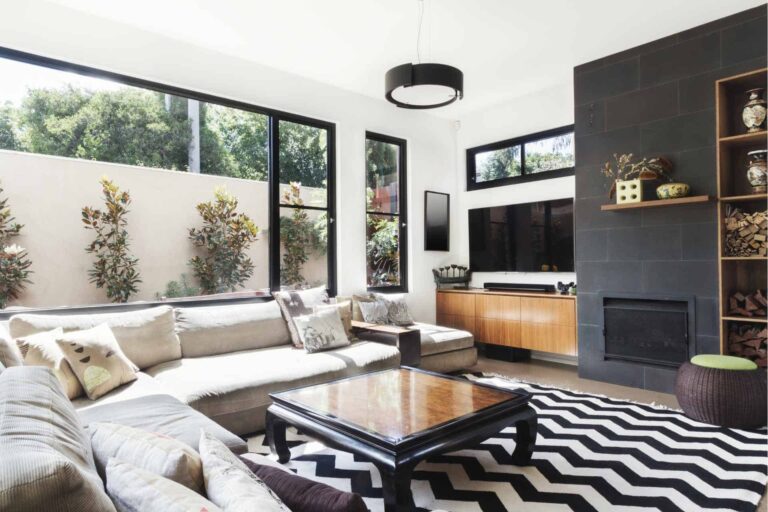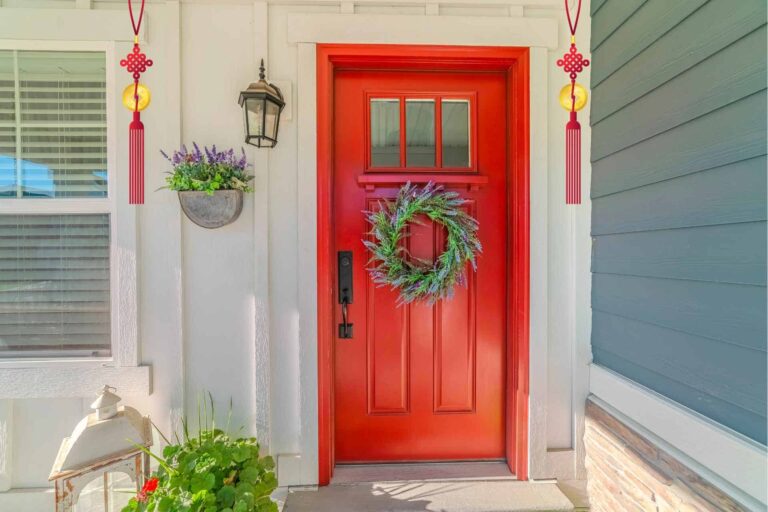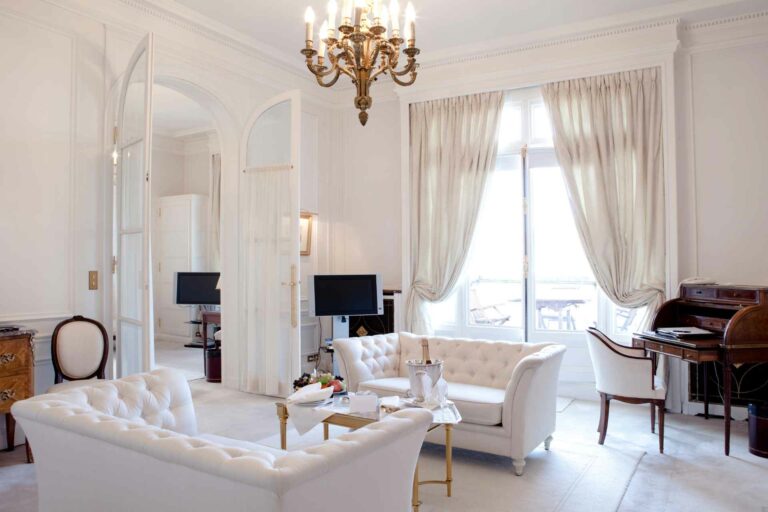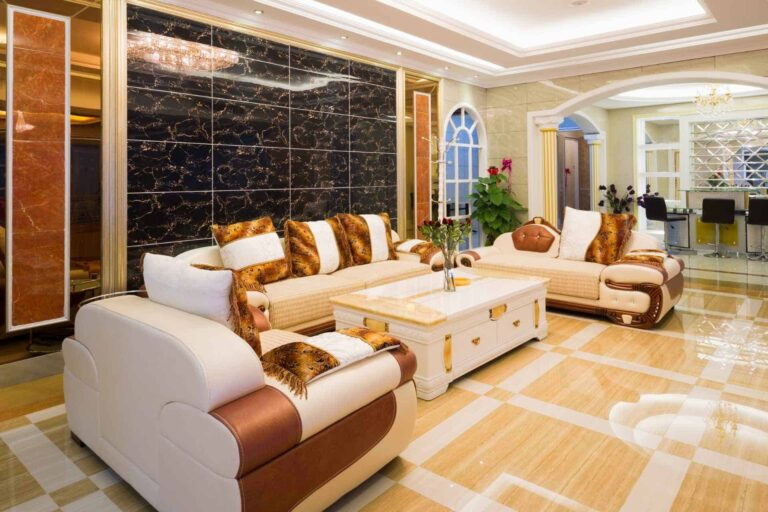How to Choose the Best Feng Shui Colors for Living Room
Feng Shui, an ancient Chinese practice, has been utilized for centuries to create harmonious living spaces that promote health, prosperity, and happiness. One vital aspect of this practice is the selection of the best Feng Shui colors for living room. The colors we choose to decorate our home can significantly affect our mood and energy flow. This guide will delve into the art of choosing the right Feng Shui colors, focusing on the living room, the space where we often spend most of our time and where we entertain our guests. The goal is to help you create a living room that exudes positivity and tranquillity, enhancing the overall ambiance of your home.
Understanding the Concept of Feng Shui Colors
The concept of Feng Shui colors is rooted in the ancient belief of the Five Elements – Wood, Fire, Earth, Metal, and Water. Each of these elements is associated with a specific color or group of colors that influences various aspects of life and wellbeing. It’s believed that harmonizing these elements within your living environment through thoughtful color selection can promote a balanced, positive energy flow, or “Chi”. Colors in Feng Shui are more than mere decorative choices; they symbolize various aspects of life and have the power to stimulate different emotional responses. For instance, green, representing the Wood element, signifies growth and renewal, whereas blue, representing the Water element, invokes peace and calm. Understanding these associations is the first step towards harnessing the power of Feng Shui colors in your living room.
The Importance of Applying Feng Shui Principles in the Living Room
The living room is often considered the heart of the home, a central hub where we relax, entertain, and create memories with family and friends. Applying Feng Shui principles in this area can greatly enhance the environment, bringing about an overall sense of balance and serenity. The importance lies in the positive flow of energy, or ‘Chi’, that Feng Shui can promote within this space. A well-executed Feng Shui design in the living room can provide a harmonious atmosphere, encouraging relaxation, conversation, and positivity. Additionally, Feng Shui can also optimize the living room space, making it appear more spacious and inviting. Remember, a living room imbued with good Feng Shui can enhance the energy of the entire home, promoting happiness, health and prosperity for those who dwell within.
Guidelines on Choosing the Best Feng Shui Colors for Living Room
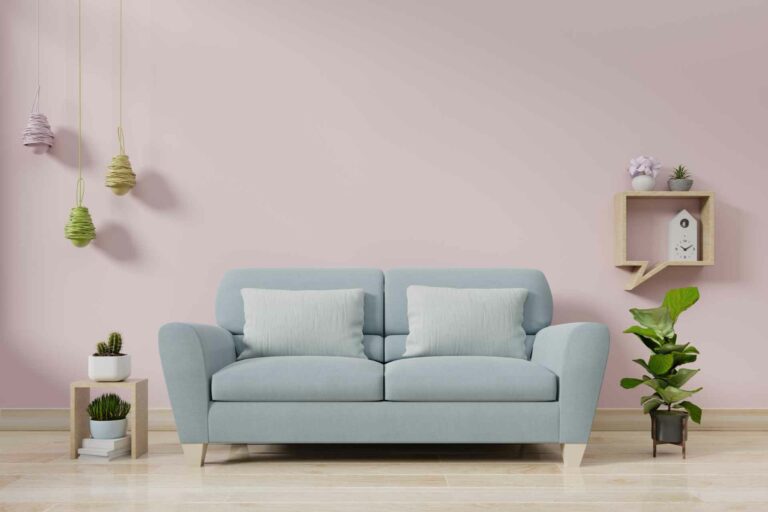
When it comes to choosing the best Feng Shui colors for your living room, there are a few considerations to keep in mind. First and foremost, pay attention to the specific elements associated with each color, as mentioned earlier. This will help you understand what energy or emotion a particular color can bring into your space. It’s also important to consider the existing decor and furnishings in your living room, as well as the amount of natural light present. Here are a few general guidelines to follow when selecting Feng Shui colors for your living room:
Considering the Five Elements
According to Feng Shui principles, there are five elements – Wood, Fire, Earth, Metal, and Water – that can be represented by specific colors. These elements work together in a cycle of creation (Wood feeds Fire, Fire creates Earth, etc.), and having a balance of these energies is essential for good Feng Shui. For example, if your living room already has a lot of Wood element – perhaps through wooden furniture or plants – you can balance it out with the Fire element represented by colors such as red, orange, and pink.
Harmonizing with the Bagua Map
The Bagua Map is a Feng Shui tool that divides your living room into nine areas, each associated with a specific life area. These include wealth, career, marriage and relationships, family, health, creativity, knowledge, fame, and helpful people. By understanding the energies associated with each area on the Bagua Map, you can choose colors that will support or enhance those aspects of your life. For example, for the wealth area in your living room, you may want to use shades of green or purple to attract abundance and prosperity.
Taking into Account the Compass Directions
Another important aspect of Feng Shui is the compass directions. Each direction has its own unique energy and corresponding colors. For instance, the North represents the element of Water and is associated with dark blue or black colors. The South symbolizes Fire and can be enhanced with reds, oranges, and purples. By determining the compass direction of your living room, you can choose colors that will promote the desired energy and balance in that area.
Trusting Your Intuition
While there are guidelines and principles to follow, Feng Shui also emphasizes the importance of intuition and personal preference. If you have a strong connection with a particular color, it may be beneficial to incorporate it into your living room even if it doesn’t align with traditional Feng Shui color associations. Ultimately, the most important aspect of Feng Shui is creating a harmonious and balanced space that feels good to you.
Popular Feng Shui Colors for Living Rooms and Their Symbolism
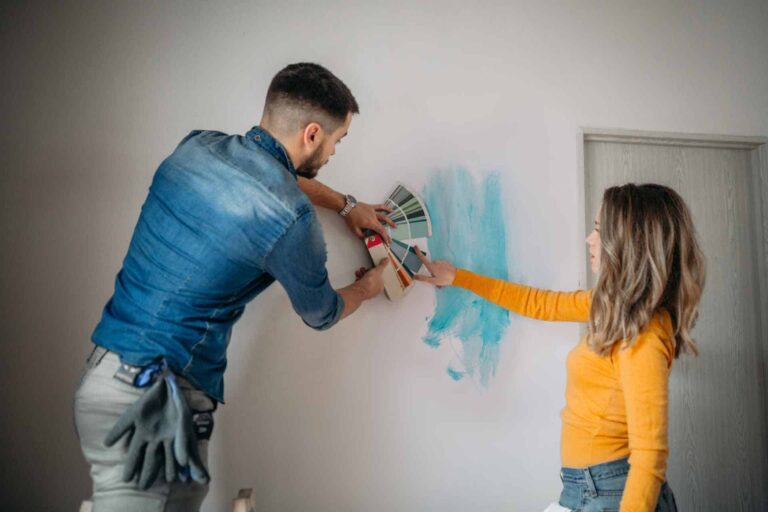
Here are some popular Feng Shui colors for living rooms and their associated meanings:
- Green: Represents growth, abundance, and new beginnings.
- Blue: Promotes calmness, peace, and introspection.
- Red: Symbolizes passion, energy, and excitement.
- Yellow: Represents happiness, positivity, and optimism.
- Purple: Enhances wealth, prosperity, and spirituality.
- Orange: Promotes creativity, joy, and warmth.
Green for Growth and Renewal
Green is a powerful color in Feng Shui as it represents the Wood element and symbolizes growth, abundance, and new beginnings. It’s an excellent choice for a living room that needs a boost of positive energy or for individuals looking to start fresh in their lives.
Blue for Calmness and Serenity
Blue is associated with the Water element and promotes calmness, peace, and introspection. It’s a great color for those seeking a tranquil and relaxing atmosphere in their living room. However, be mindful not to overdo it with blue as too much of this cool color can create a sense of detachment.
Red for Passion and Vitality
Red is often associated with the Fire element and symbolizes passion, energy, and excitement. It’s a bold and powerful color that can add warmth and vibrancy to a living room, making it an ideal choice for those seeking a lively and energetic space.
Yellow for Positivity and Optimism
Yellow is associated with the Earth element and represents happiness, positivity, and optimism. It’s a cheerful and uplifting color that can bring light into any living room. However, it’s essential to balance yellow with other colors as too much of it can cause anxiety and restlessness.
Purple for Wealth and Spirituality
Purple is associated with the Fire element and represents wealth, prosperity, and spirituality. It’s a luxurious color that adds a touch of sophistication and opulence to any living room. Purple is also believed to promote spiritual growth and inner peace.
White for Purity and Clarity
White is associated with the Metal element and symbolizes purity, clarity, and cleanliness. It’s a versatile color that can create an airy and spacious feel in a living room. White also reflects light, making it an ideal choice for small or dark spaces.
Choosing the Right Color Scheme
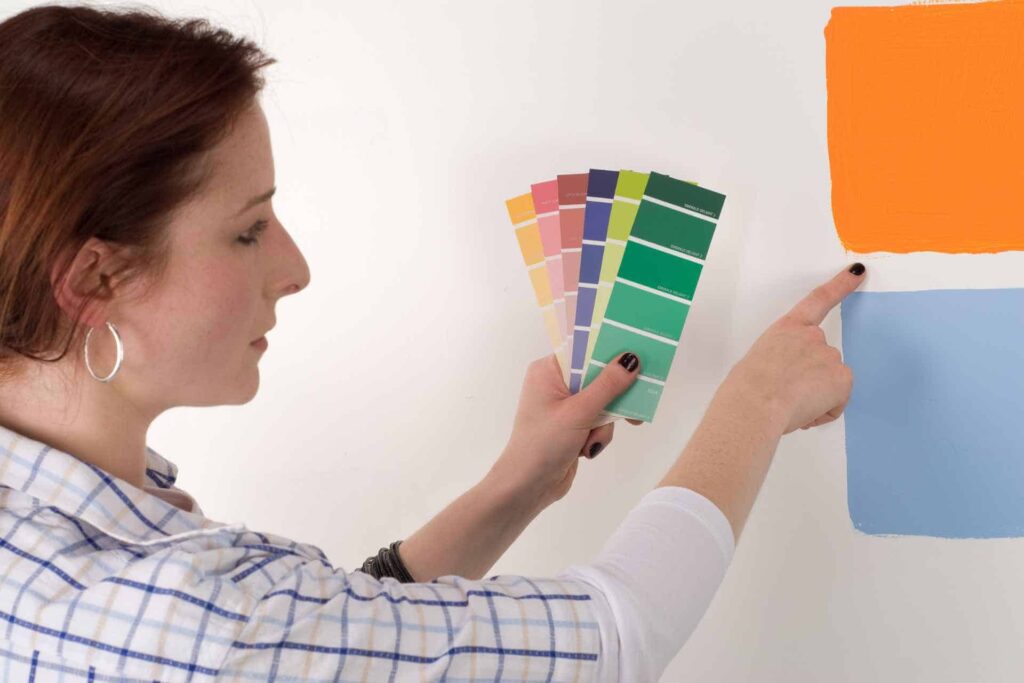
When using Feng Shui principles to decorate a living room, it’s essential to choose the right color scheme. The most effective way is to use a combination of colors from different elements for balance and harmony. For example, combining blue and green (Water and Wood elements) can create a harmonious and calming atmosphere.
Alternatively, you can also use the Bagua map to determine which colors are best suited for your living room. The Bagua map is a tool used in Feng Shui to divide a space into nine sections, with each section representing a different aspect of life. By identifying the specific areas in your living room that align with certain aspects of your life, you can choose colors that promote balance and harmony in those areas.
How to Incorporate Feng Shui Colors in Your Living Room Decor
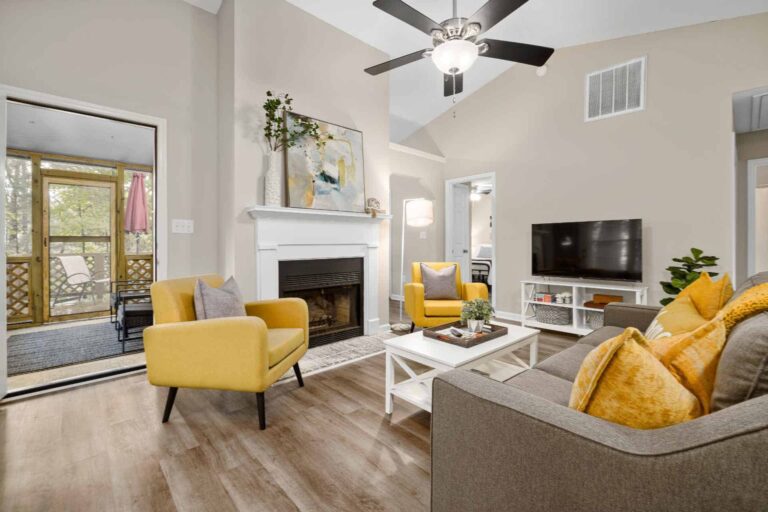
There are several ways to incorporate Feng Shui colors in your living room decor, such as:
- Paint the walls: The most obvious way is to paint the walls in specific colors that align with the Bagua map or elements. You can also use wallpaper or wall decals in different colors to add variety and texture.
- Use furniture and accessories: You can also bring in Feng Shui colors through furniture and accessories such as pillows, rugs, curtains, and artwork. Be mindful of the colors and elements represented in each item.
- Add plants: Plants not only add a touch of nature to your living room but also represent the Wood element in Feng Shui. Choose plants with green or blue leaves for a calming effect.
- Incorporate lighting: Lighting plays a significant role in Feng Shui, and you can use it to incorporate colors in your living room. You can choose colored light bulbs or lampshades that align with the elements or Bagua map.
- Mindful placement: In Feng Shui, the placement of furniture and objects is crucial. Ensure that there is enough space for energy (or Qi) to flow freely and avoid clutter, especially in areas that represent the health, wealth, or relationship aspects of your life.
- Balance yin and yang: In Feng Shui, balance is essential. So while incorporating colors, make sure to balance the contrasting energies of yin (calm) and yang (active). For example, if you have a lot of blue (yin), balance it with some red (yang).
Avoiding Common Mistakes in Applying Feng Shui Colors
While incorporating Feng Shui colors in your living room, it is essential to avoid some common mistakes that can hinder the flow of positive energy. Here are a few things to keep in mind:
- Avoid using too much red: While red is a powerful color representing passion and vitality, using too much of it can create an overwhelming and aggressive atmosphere. Instead, use pops of red as accents to balance the energy in your living room.
- Don’t neglect neutral colors: Neutral colors such as white, beige, and gray are often overlooked in Feng Shui color principles. However, these colors can help create a sense of balance and calmness in your living room. Incorporate them through furniture or accessories to add depth to your space.
- Consider personal preferences: While Feng Shui principles may suggest specific colors for different areas of your home, it is essential to consider your personal preferences as well. Ultimately, you should feel comfortable and at ease in your living room, so choose colors that resonate with you.
- Avoid too much clutter: As mentioned earlier, clutter can disrupt the flow of energy in a space. Make sure to declutter your living room regularly and keep it organized to maintain a positive energy flow.
- Keep balance in mind: In Feng Shui, balance is key. Avoid using too many colors that clash or overwhelm each other. Stick to a few dominant colors while incorporating pops of complementary colors for a harmonious balance.
Conclusion
The strategic use of Feng Shui colors in your living space has a significant impact on your mood and energy flow. The right balance of colors can create a harmonious, calming environment that enhances well-being and promotes positive energy flow. Overuse of strong colors like red may lead to an aggressive atmosphere, while neglecting neutral tones can disrupt the sense of tranquility. Remember, the key to a successful Feng Shui design is balance – both in terms of color and clutter. Also, never overlook the importance of personal preference. While adhering to Feng Shui principles can guide you towards a more balanced and peaceful home, your personal comfort and resonance with the chosen colors are paramount. Ultimately, a well-designed living room, infused with the right Feng Shui colors, creates an ambiance of peace and harmony, promoting a flow of positive energy, and impacting overall mood positively.


